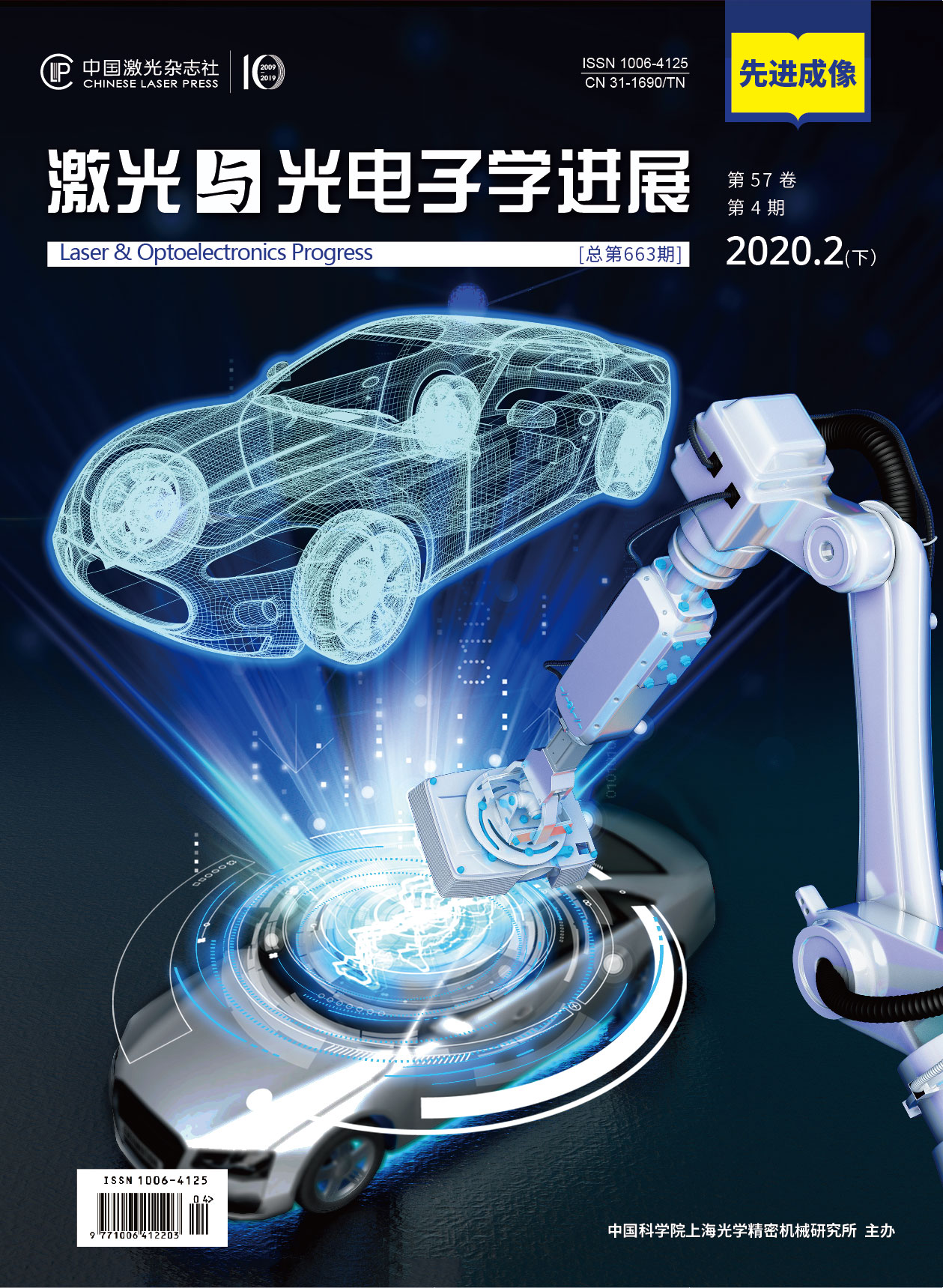Journals >Laser & Optoelectronics Progress
- Publication Date: Feb. 18, 2020
- Vol. 57, Issue 4, 041001 (2020)
- Publication Date: Feb. 18, 2020
- Vol. 57, Issue 4, 041002 (2020)
- Publication Date: Feb. 18, 2020
- Vol. 57, Issue 4, 041003 (2020)
- Publication Date: Feb. 18, 2020
- Vol. 57, Issue 4, 041004 (2020)
- Publication Date: Feb. 18, 2020
- Vol. 57, Issue 4, 041005 (2020)
- Publication Date: Feb. 18, 2020
- Vol. 57, Issue 4, 041006 (2020)
- Publication Date: Feb. 18, 2020
- Vol. 57, Issue 4, 041007 (2020)
- Publication Date: Feb. 18, 2020
- Vol. 57, Issue 4, 041008 (2020)
- Publication Date: Feb. 18, 2020
- Vol. 57, Issue 4, 041009 (2020)
- Publication Date: Feb. 18, 2020
- Vol. 57, Issue 4, 041010 (2020)
- Publication Date: Feb. 18, 2020
- Vol. 57, Issue 4, 041011 (2020)
- Publication Date: Feb. 19, 2020
- Vol. 57, Issue 4, 041012 (2020)
- Publication Date: Feb. 18, 2020
- Vol. 57, Issue 4, 041013 (2020)
- Publication Date: Feb. 18, 2020
- Vol. 57, Issue 4, 041014 (2020)
ing at the remote sensing images with target intensive, multi-scale, and occlusion, a remote sensing image segmentation model based on the attention mechanism is proposed herein. The proposed method is based on the deep image segmentation model. The channel attention mechanism is used for weighting the low-level features before high-low layer feature fusion, thus enhancing the target features, suppressing the background features, and improving the information fusion efficiency. A positional attention mechanism is proposed to process the final features of the decoding phase for further enhancing the responsiveness of the model to the target features. At last, weighted and aggregated feature maps are up-sampled to the original image size for pixel label prediction. Experiments on two remote sensing road datasets and comparisons with related models show that the proposed model displays excellent performance in remote sensing image road extraction and can be employed to complex remote sensing image segmentation.
.- Publication Date: Feb. 18, 2020
- Vol. 57, Issue 4, 041015 (2020)
- Publication Date: Feb. 18, 2020
- Vol. 57, Issue 4, 041016 (2020)
- Publication Date: Feb. 18, 2020
- Vol. 57, Issue 4, 041017 (2020)
- Publication Date: Feb. 18, 2020
- Vol. 57, Issue 4, 041018 (2020)
- Publication Date: Feb. 18, 2020
- Vol. 57, Issue 4, 041019 (2020)
on multiple datasets show that the proposed method achieves superior performance compared with 10 algorithms proposed in recent years.
.- Publication Date: Feb. 18, 2020
- Vol. 57, Issue 4, 041020 (2020)
- Publication Date: Feb. 18, 2020
- Vol. 57, Issue 4, 041021 (2020)
- Publication Date: Feb. 18, 2020
- Vol. 57, Issue 4, 041501 (2020)
- Publication Date: Feb. 18, 2020
- Vol. 57, Issue 4, 041502 (2020)
- Publication Date: Feb. 18, 2020
- Vol. 57, Issue 4, 041503 (2020)
- Publication Date: Feb. 18, 2020
- Vol. 57, Issue 4, 041504 (2020)
- Publication Date: Feb. 18, 2020
- Vol. 57, Issue 4, 041505 (2020)
- Publication Date: Feb. 18, 2020
- Vol. 57, Issue 4, 041506 (2020)
- Publication Date: Feb. 18, 2020
- Vol. 57, Issue 4, 041507 (2020)
- Publication Date: Feb. 19, 2020
- Vol. 57, Issue 4, 041508 (2020)
- Publication Date: Feb. 18, 2020
- Vol. 57, Issue 4, 041509 (2020)
- Publication Date: Feb. 18, 2020
- Vol. 57, Issue 4, 041510 (2020)
- Publication Date: Feb. 18, 2020
- Vol. 57, Issue 4, 041511 (2020)
- Publication Date: Feb. 18, 2020
- Vol. 57, Issue 4, 041512 (2020)
- Publication Date: Feb. 18, 2020
- Vol. 57, Issue 4, 041513 (2020)
- Publication Date: Feb. 18, 2020
- Vol. 57, Issue 4, 041514 (2020)
- Publication Date: Feb. 18, 2020
- Vol. 57, Issue 4, 041515 (2020)
- Publication Date: Feb. 18, 2020
- Vol. 57, Issue 4, 042801 (2020)
- Publication Date: Feb. 19, 2020
- Vol. 57, Issue 4, 040001 (2020)
- Publication Date: Feb. 18, 2020
- Vol. 57, Issue 4, 040002 (2020)
- Publication Date: Feb. 18, 2020
- Vol. 57, Issue 4, 040003 (2020)











